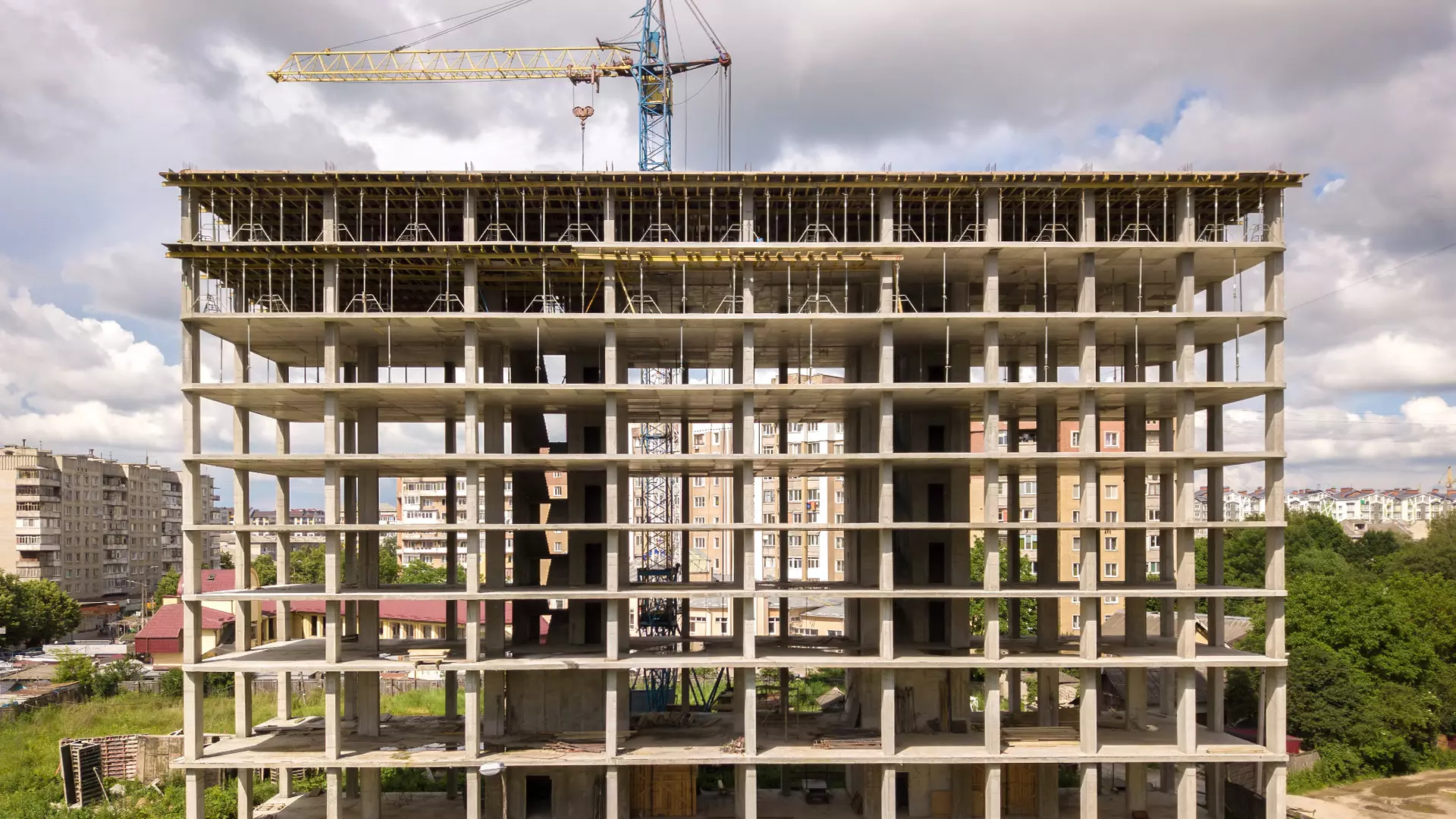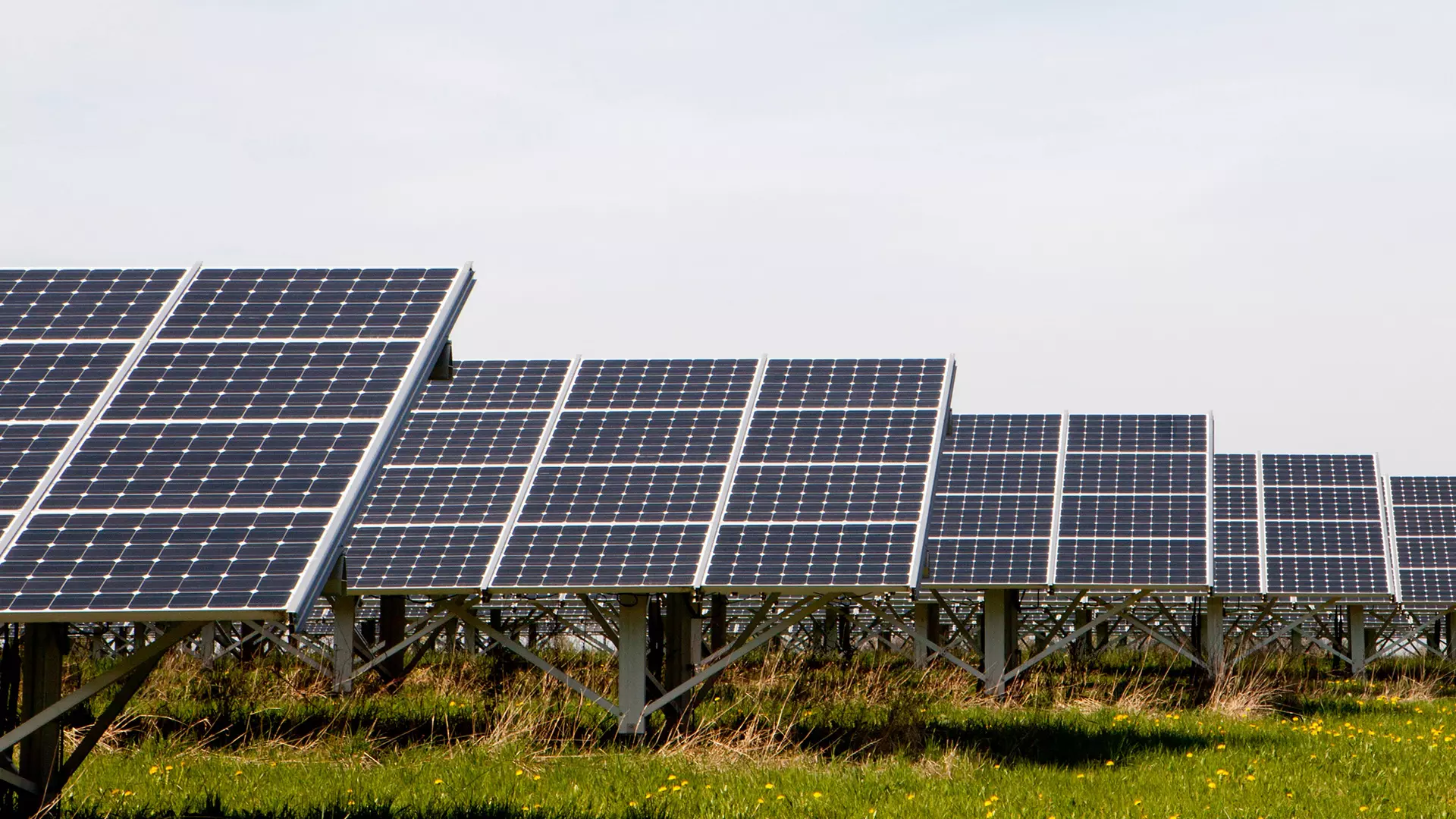 Credit: shotsstudio | envato
Credit: shotsstudio | envatoDriving Sustainability in Real Estate
THE POWER OF PROPTECH SOLUTIONS FOR ESG SUCCESS
July 13, 2023Real Estate
Written by Imre-Gustav Vellamaa
R8 Technologies
GRI Club member since 2021
Real estate is the world’s most significant store of wealth. The value of all the world’s real estate reached $326.5 trillion in 2020.1 This is more valuable than all of the global equities and debt securities combined, and equivalent to almost four times the global GDP.
Real estate is a long term industry and we don’t need to delve too far back in history or even consider that the oldest existing buildings date back more than 10,000 years to see this.
Nowadays financial ROI calculations for real estate projects in the range of 15-20 years are typical. For owners and operators, this also means that any short term market fluctuations (see COVID-19 in 2020-2022, the energy crisis in 2022, growing inflation and interest rates in 2023, and more for examples) must always be considered as a natural part of business.
These fluctuations must be taken seriously to navigate ahead safely but these “temporary challenges“ cannot be allowed to blow you off course. Thus the question arises – are there any true game changers to pay attention to in the real estate industry? And if so, what are they?
Almost 8 years ago, in September 2015, the “2030 Agenda for Sustainable Development“ - with its 17 Sustainable Development Goals (SDGs) - was adopted during the UN Sustainable Development Summit in New York.
Another effort to tackle climate change and its increasingly negative impacts came later that same year, in December 2015, when world leaders at the UN Climate Change Conference (COP21) in France reached a breakthrough: the historic Paris Agreement.
The EU aims to be climate-neutral - an economy with net-zero greenhouse gas emissions - by 2050. This objective is at the heart of the European Green Deal and is fully in line with the EU’s commitment to global climate action under the Paris Agreement.
For the study “The ESG Ultimatum: Profit or Perish“, IBM’s Institute for Business Value (IBV) analysed survey results from more than 20,000 consumers about their attitudes toward sustainability and social responsibility, as well as a survey of 2,500 executives across 22 industries and 34 countries regarding their ESG strategies and objectives.
The study also segmented businesses according to ESG maturity to compare relative performance. According to the results, consumers are increasingly focused on the sustainability performance of companies when making purchasing and employment decisions, while more than 70% of executives view ESG as a revenue enabler.3
Without a doubt - there is a strong reason to change the current trajectory of real estate, on a global, company, and personal level!
Every goal needs decision-based strategies. Every decision needs solutions with proven track records and partnership relations with high levels of both reliability and competence. But this cannot happen overnight!
There are now less than 7 years to go until 2030. This limited window poses a challenge for the industry, because such a compressed period leaves little room for hasty experimentation, making it imperative for strategic decisions to be made with long-term perspectives in mind.
What will it take for the real estate industry to reach our 2030 and 2050 targets?
The operation and maintenance of any building has been shown to have the longest lasting impact on ESG strategies. According to a number of studies on the subject, for every 1 euro spent on the construction of a building, between 5 and 7 euros are spent on maintenance.
In particular, the UK's Royal Academy of Engineering analysed the typical costs of an office building over thirty years, obtaining a ratio of 1:5:200 in construction costs, maintenance costs, and operating costs, respectively.
It also cannot be forgotten that there are different stages of every building’s life cycle, all of which must be taken into consideration: raw material extraction; manufacturing; construction; operation and maintenance; demolition; disposal; and reuse/recycling.4
It is imperative to devise sound ESG strategies that consider the holistic well-being of profits, people, and the planet, while also implementing and evaluating their effectiveness. ESG strategies consist of 3 parts:5

With a solid ESG strategy firmly established, the next step is to identify the technologies that will have the highest correlation with the objectives while also aligning with the current stage of the building’s life cycle.
There are a range of solutions available, each with different impacts, life cycles, and investment requirements, and it can be difficult to know where to start when making decisions as to which one best fits the project.
The Total Concept offers a method and financial tool to assist building owners in making informed decisions about investments in energy-saving measures. This enables property owners to understand the financial benefits and opportunities of energy retrofitting, ultimately achieving significant energy savings and meeting energy efficiency targets.
It should be remembered that making investments in renewable energy can also be considered as an energy saving measure.6
It is important to prioritise measures that provide a higher impact/investment ratio, with their implementation conducted as swiftly as possible. While it is advisable to begin with low hanging fruit - the most easily achievable or cost-effective options - it is also essential to consider additional measures in parallel.
However, practical limitations - such as resource and financial constraints that may affect the ability to implement multiple measures simultaneously - must be given strong consideration.
The emergence of Property Technologies (Proptechs) as a significant force in real estate is a relatively recent development. There was a lack of pressing demand or necessity for these technological advancements just a few years ago.7
When it comes to new technologies, there are usually a few early adopters, but many companies prefer to wait unless there is a pressing need. The COVID-19 pandemic was a key driver for accelerating the adoption of technology once travel and physical meetings became limited, creating new opportunities for digital solutions.
As ESG deadlines approach, every percentage of efficiency becomes increasingly crucial. The PropTech industry is well-prepared for this challenge. In 2021, the global PropTech market was valued at USD 25 billion, and it is projected to grow at a compound annual growth rate (CAGR) of 15.8% from 2022 to 2030.8
This growth demonstrates the industry's readiness to meet the demands of sustainability and efficiency in the real estate sector.
While it's challenging to estimate an exact percentage for how much of an increase in efficiency (energy, operational, etc) can be expected from the adoption of Proptechs, the impact can range from 20% to 50%, or even higher.

At the same time it cannot be forgotten that increased efficiency alone is not enough.
Even reducing the carbon footprint of a building by 30% by implementing the greenest energy and adopting other efficiency tools still leaves the need to cover the remaining 70% of energy requirements.
This serves to reinforce the fact that there is a remarkable need for renewable energy sources and sustainable, efficient technologies. From advanced ventilation units that optimise air quality while minimising energy consumption to intelligent heat exchangers that regulate temperature effectively, a wide array of technologies are available to improve resource efficiency in real estate operations.
Leveraging Proptech solutions further empowers real estate stakeholders to optimise building performance and make informed decisions. By embracing these measures, the industry can play a pivotal role in addressing climate change, promoting sustainable development, and ensuring a better future for generations to come.
__
Special thanks to my fellow GRI Club members Miklós Gyertyánfy (Granit Polus), Michal Bogaczynski (AEW), and Guido Wolf (Zabolis Partners) for your contributions to this article!
Sources:
1 - The total value of global real estate - Savills
2 - What is the history of ESG? - The Corporate Governance Institute.
3 - Over 70% of Businesses View ESG as a Revenue Enabler - IBM Study
4 - A theoretical review of building life cycle stages and their related environmental impacts
5 - What is an ESG strategy? And what is sustainability? - Korn Ferry
6 - The Total Concept method - Total Concept
7 - When did the term "Proptech" start? - Resources - Unissu
8 - Global PropTech Market Size, Share & Growth Report, 2030
R8 Technologies
GRI Club member since 2021
Real estate is the world’s most significant store of wealth. The value of all the world’s real estate reached $326.5 trillion in 2020.1 This is more valuable than all of the global equities and debt securities combined, and equivalent to almost four times the global GDP.
Real estate is a long term industry and we don’t need to delve too far back in history or even consider that the oldest existing buildings date back more than 10,000 years to see this.
Nowadays financial ROI calculations for real estate projects in the range of 15-20 years are typical. For owners and operators, this also means that any short term market fluctuations (see COVID-19 in 2020-2022, the energy crisis in 2022, growing inflation and interest rates in 2023, and more for examples) must always be considered as a natural part of business.
These fluctuations must be taken seriously to navigate ahead safely but these “temporary challenges“ cannot be allowed to blow you off course. Thus the question arises – are there any true game changers to pay attention to in the real estate industry? And if so, what are they?
 The EU aims to be climate-neutral by 2050 (Photo: SeanPavone | envato)
The EU aims to be climate-neutral by 2050 (Photo: SeanPavone | envato)
ESG is the new playmaker in the world economy
The first mainstream mention of ESG in a modern context was a 2004 report from the United Nations titled “Who Cares Wins“.2 But, despite this impassioned title, in reality there was no true sense of urgency at that time - except among a few scientists and climate activists.Almost 8 years ago, in September 2015, the “2030 Agenda for Sustainable Development“ - with its 17 Sustainable Development Goals (SDGs) - was adopted during the UN Sustainable Development Summit in New York.
Another effort to tackle climate change and its increasingly negative impacts came later that same year, in December 2015, when world leaders at the UN Climate Change Conference (COP21) in France reached a breakthrough: the historic Paris Agreement.
The EU aims to be climate-neutral - an economy with net-zero greenhouse gas emissions - by 2050. This objective is at the heart of the European Green Deal and is fully in line with the EU’s commitment to global climate action under the Paris Agreement.
Is ESG good or bad for business?
For the study “The ESG Ultimatum: Profit or Perish“, IBM’s Institute for Business Value (IBV) analysed survey results from more than 20,000 consumers about their attitudes toward sustainability and social responsibility, as well as a survey of 2,500 executives across 22 industries and 34 countries regarding their ESG strategies and objectives. The study also segmented businesses according to ESG maturity to compare relative performance. According to the results, consumers are increasingly focused on the sustainability performance of companies when making purchasing and employment decisions, while more than 70% of executives view ESG as a revenue enabler.3
Without a doubt - there is a strong reason to change the current trajectory of real estate, on a global, company, and personal level!
Every goal needs decision-based strategies. Every decision needs solutions with proven track records and partnership relations with high levels of both reliability and competence. But this cannot happen overnight!
There are now less than 7 years to go until 2030. This limited window poses a challenge for the industry, because such a compressed period leaves little room for hasty experimentation, making it imperative for strategic decisions to be made with long-term perspectives in mind.
What will it take for the real estate industry to reach our 2030 and 2050 targets?
Sustainable Operations & Maintenance

There are many different stages of every building’s life cycle, all of which must be taken into consideration. (Photo:bilanol | envato)
The operation and maintenance of any building has been shown to have the longest lasting impact on ESG strategies. According to a number of studies on the subject, for every 1 euro spent on the construction of a building, between 5 and 7 euros are spent on maintenance.
In particular, the UK's Royal Academy of Engineering analysed the typical costs of an office building over thirty years, obtaining a ratio of 1:5:200 in construction costs, maintenance costs, and operating costs, respectively.
It also cannot be forgotten that there are different stages of every building’s life cycle, all of which must be taken into consideration: raw material extraction; manufacturing; construction; operation and maintenance; demolition; disposal; and reuse/recycling.4
It is imperative to devise sound ESG strategies that consider the holistic well-being of profits, people, and the planet, while also implementing and evaluating their effectiveness. ESG strategies consist of 3 parts:5
- Environmental criteria consider environment-related impact and risks – and what the company may or may not be doing to reduce or mitigate them.
- Social criteria cover the social impact generated by relationships with the company’s workers, customers, suppliers, and its communities.
- Governance criteria detail roles, responsibilities, and expectations to ensure that decisions are made with consideration for customers, employees, shareholders, regulators, and the community as a whole.
ESG strategies need ESG technologies

It is important to prioritise measures that provide a higher impact/investment ratio. (Photo: imagesourcecurated | envato)
With a solid ESG strategy firmly established, the next step is to identify the technologies that will have the highest correlation with the objectives while also aligning with the current stage of the building’s life cycle.
There are a range of solutions available, each with different impacts, life cycles, and investment requirements, and it can be difficult to know where to start when making decisions as to which one best fits the project.
The Total Concept offers a method and financial tool to assist building owners in making informed decisions about investments in energy-saving measures. This enables property owners to understand the financial benefits and opportunities of energy retrofitting, ultimately achieving significant energy savings and meeting energy efficiency targets.
It should be remembered that making investments in renewable energy can also be considered as an energy saving measure.6
It is important to prioritise measures that provide a higher impact/investment ratio, with their implementation conducted as swiftly as possible. While it is advisable to begin with low hanging fruit - the most easily achievable or cost-effective options - it is also essential to consider additional measures in parallel.
However, practical limitations - such as resource and financial constraints that may affect the ability to implement multiple measures simultaneously - must be given strong consideration.
Low Hanging Fruit - PropTech
At their core, PropTechs are focused on making things more efficient, just like other tools that improve efficiency, such as adding insulation to a building. Proptechs use advanced technologies from Industry 4.0, like Data Analysis and Visualization, Internet of Things (IoT), Artificial Intelligence (AI), and Machine Learning (ML), to achieve this efficiency.The emergence of Property Technologies (Proptechs) as a significant force in real estate is a relatively recent development. There was a lack of pressing demand or necessity for these technological advancements just a few years ago.7
When it comes to new technologies, there are usually a few early adopters, but many companies prefer to wait unless there is a pressing need. The COVID-19 pandemic was a key driver for accelerating the adoption of technology once travel and physical meetings became limited, creating new opportunities for digital solutions.
As ESG deadlines approach, every percentage of efficiency becomes increasingly crucial. The PropTech industry is well-prepared for this challenge. In 2021, the global PropTech market was valued at USD 25 billion, and it is projected to grow at a compound annual growth rate (CAGR) of 15.8% from 2022 to 2030.8
This growth demonstrates the industry's readiness to meet the demands of sustainability and efficiency in the real estate sector.
While it's challenging to estimate an exact percentage for how much of an increase in efficiency (energy, operational, etc) can be expected from the adoption of Proptechs, the impact can range from 20% to 50%, or even higher.

There is a remarkable need for renewable energy sources and sustainable, efficient technologies.(Photo: Zozulinskyi | envato)
Taking action
The real key is to take action today in implementing these solutions, as they often require relatively low investments based on careful calculations. Moreover, it is essential to bear in mind that when it comes to CO2 emissions and energy usage - the greenest energy is that which has never been produced and consumed.At the same time it cannot be forgotten that increased efficiency alone is not enough.
Even reducing the carbon footprint of a building by 30% by implementing the greenest energy and adopting other efficiency tools still leaves the need to cover the remaining 70% of energy requirements.
This serves to reinforce the fact that there is a remarkable need for renewable energy sources and sustainable, efficient technologies. From advanced ventilation units that optimise air quality while minimising energy consumption to intelligent heat exchangers that regulate temperature effectively, a wide array of technologies are available to improve resource efficiency in real estate operations.
Leveraging Proptech solutions further empowers real estate stakeholders to optimise building performance and make informed decisions. By embracing these measures, the industry can play a pivotal role in addressing climate change, promoting sustainable development, and ensuring a better future for generations to come.
__
Special thanks to my fellow GRI Club members Miklós Gyertyánfy (Granit Polus), Michal Bogaczynski (AEW), and Guido Wolf (Zabolis Partners) for your contributions to this article!
Sources:
1 - The total value of global real estate - Savills
2 - What is the history of ESG? - The Corporate Governance Institute.
3 - Over 70% of Businesses View ESG as a Revenue Enabler - IBM Study
4 - A theoretical review of building life cycle stages and their related environmental impacts
5 - What is an ESG strategy? And what is sustainability? - Korn Ferry
6 - The Total Concept method - Total Concept
7 - When did the term "Proptech" start? - Resources - Unissu
8 - Global PropTech Market Size, Share & Growth Report, 2030